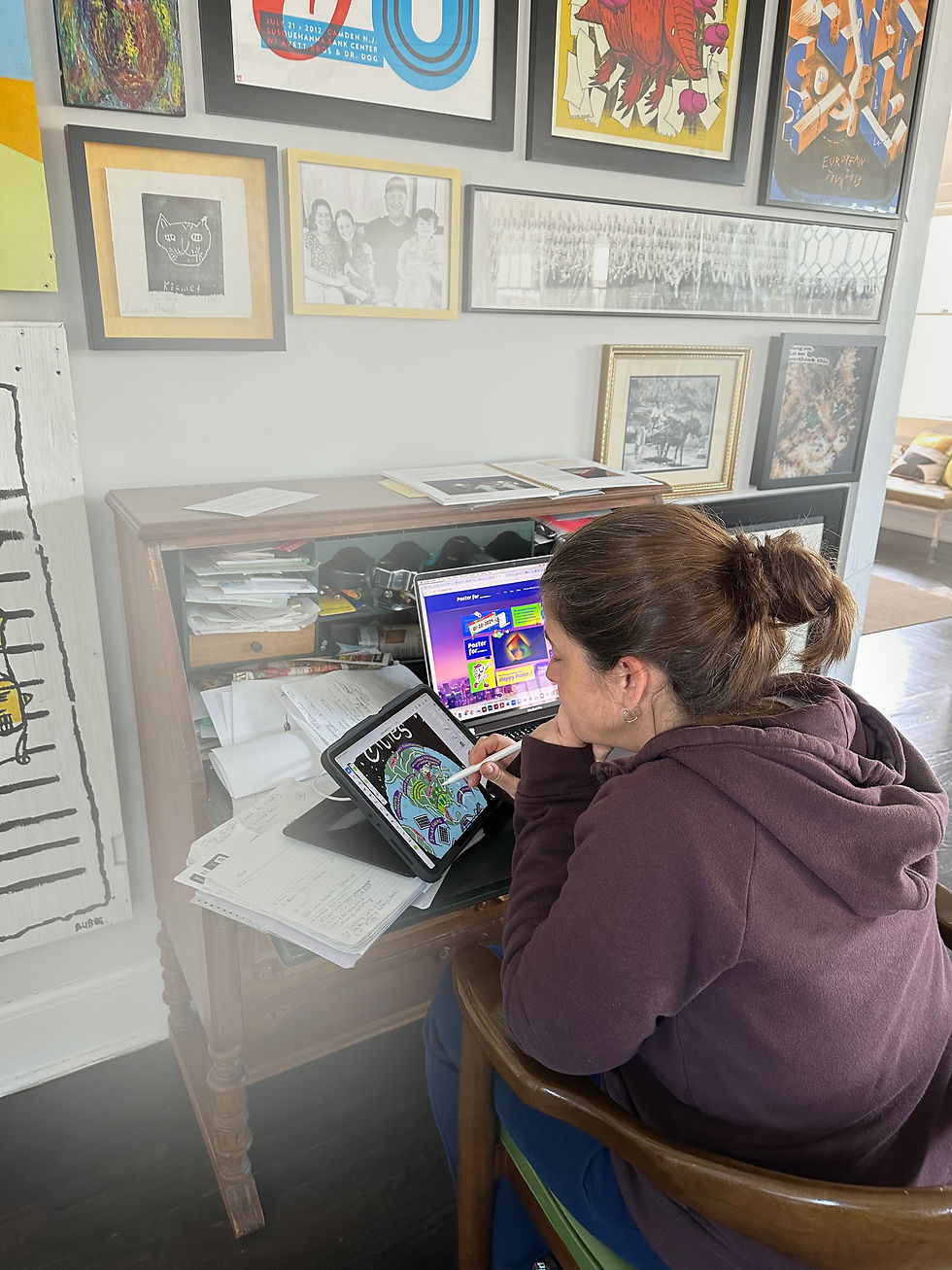Interview with Jenny B. Kowalski, Assistant Professor, and Interactive Designer
- Shangning Wang

- Mar 20, 2024
- 3 min read
Name: Jenny B. Kowalski
Company: Lehigh University
Title: Assistant Professor, Interactive Designer
Portfolio Website or company website: https://www.jennybkowalski.com/

An image of your favorite poster you want to share with our audience. Please explain why you chose this one.

I've always loved the classic WPA posters. Stylistically I am drawn to the sharp graphic representation and bold forms, but I also appreciate how they represent national support for artists and a move to bring the arts to everyday life. This poster (https://www.loc.gov/resource/ppmsca.86708/) is by Shari Weisberg, one of the women artists of the WPA. I love this poster's simple geometry and the way it plays with angles and texture.
1. Can you please briefly introduce yourself and your journey as a designer?
I'm a designer and educator, and this past year I became an Assistant Professor at Lehigh University teaching graphic design, web design, and user experience design. I was drawn to the field of design for its power to explain, communicate, and explore. Through my education and work at the University of Dayton and Temple University's Tyler School of Art and Architecture, I've had the chance to experiment with a wide variety of different tools and approaches to design. I've always seen my design and my teaching to be deeply intertwined. Teaching helps me to reflect on how designers use our skills and tools to interact with one another and the world around us.
2. Is poster design important to you?
Poster design is a powerful creative exercise. The singular image is not only an opportunity to explore different ways of visual representation, but it forces the designer to make a concrete statement. The designer needs to synthesize a complex concept into a single visual moment.
3. What role do you believe poster design plays in contemporary visual communication, particularly in addressing social or cultural issues?
Poster design can give great clarity to issues. They give people something to latch onto. Posters can act as flags for people to stand behind or hold — literally as a printed object or figuratively by sharing on social media — to express and share their beliefs.
4. How does your poster reflect your personal style or design philosophy?
My poster deals with repetition and experimentation — I created the base pattern using p5.js which allows randomness to play a part in the design process. I enjoy working with tools and systems that allow me to establish "rules" for the design, and then curating or modifying them to create a finished piece.
5. What advice do you have for young designers starting their careers? Are there any suggestions you would offer to those just beginning their journey in design?
One piece of advice I have for young designers is to always ask "why?" and be critical of your work and the world around you. Ask yourself "why" when you are making a design decision: Why this typeface? Why these colors? Why is this approach appropriate for the prompt? But also ask yourself "why" when it comes to the big questions that will shape your career and our society. Why is this work being done? Why is this thing being said? Why does this thing exist?
6. Can you give us a quote about poster design?
“While great art makes you wonder, great design makes things clear.” ― John Maeda, The Laws of Simplicity
7. Can you give us a quote about coffee?
There's something special about taking a moment for yourself to drink a cup of coffee or tea. Each sip allows a brief meditation. You focus only on the moment, the act of drinking, the flavor, the temperature.




Comments